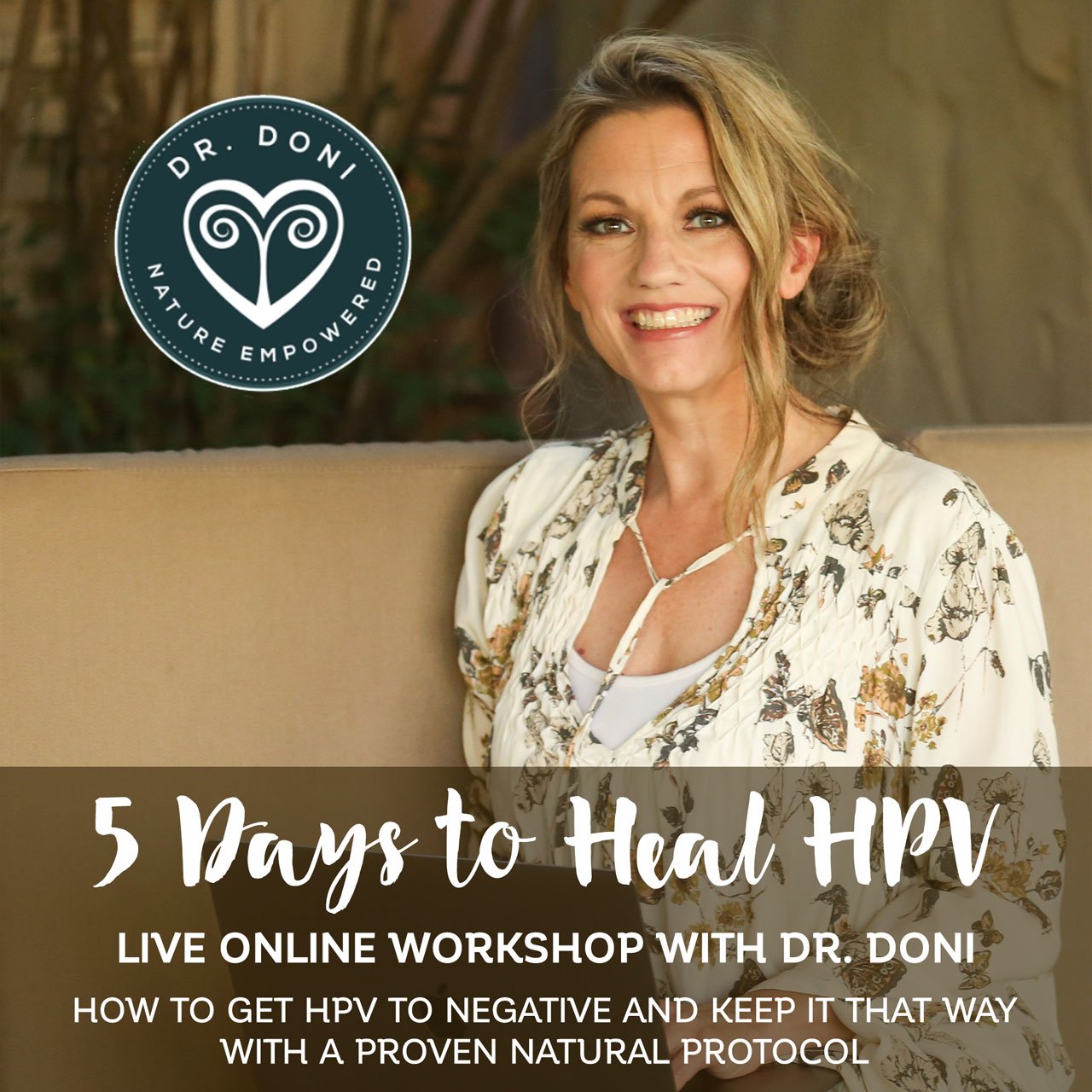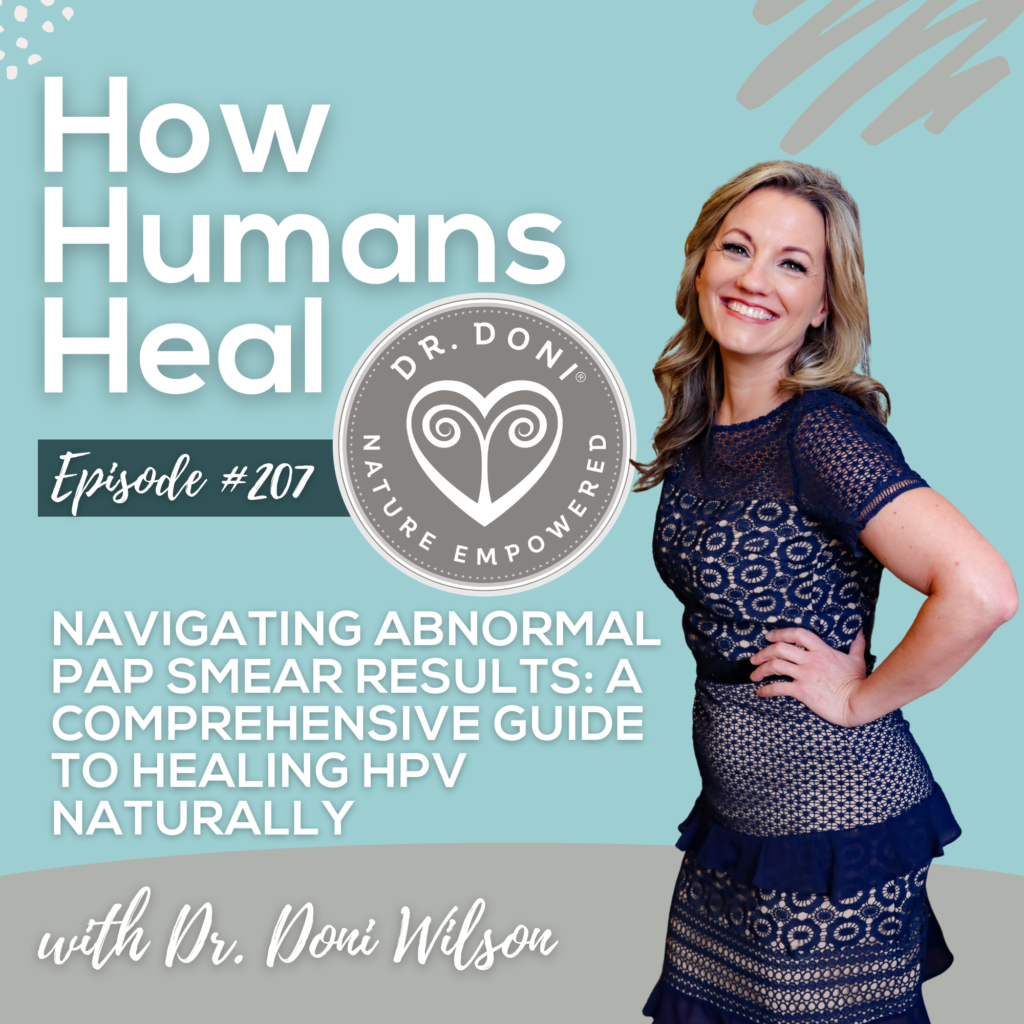
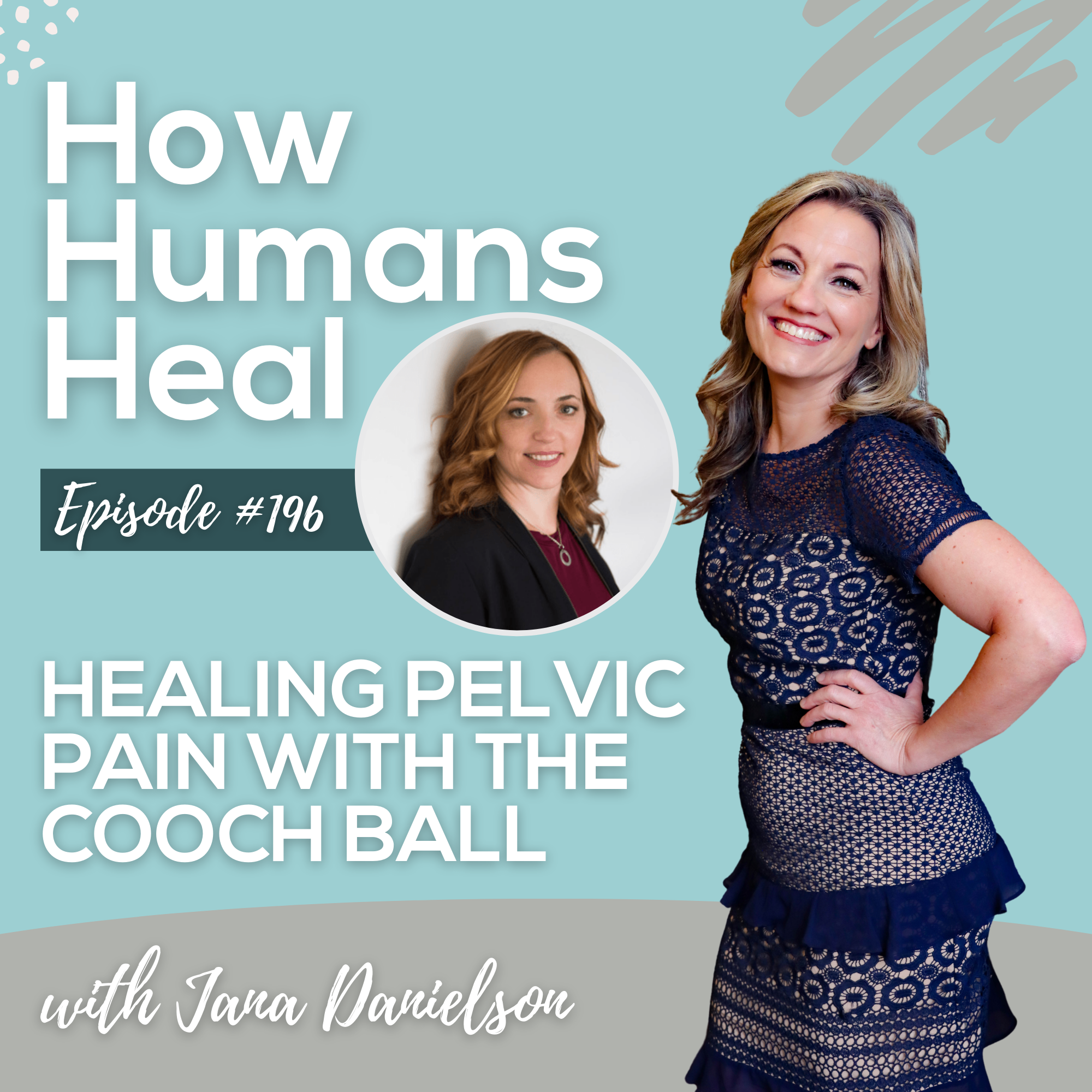
Pelvic floor health is an area that is often overlooked and not discussed openly, but it impacts many people’s wellbeing. That’s why I’m excited to introduce you to Jana Danielson. She’s the founder and creator of the Cooch Ball, which she designed to help people with pelvic pain and pelvic floor issues.
Jana will explain what the pelvic floor is, how it relates to our overall health, why issues here are more common than we realize, and how something as simple as breathwork and a ball on the floor can create better alignment and blood flow to improve function.
She’s a master Pilates instructor as well and she shares with us how Pilates inspired her to design the Cooch Ball to help people around the world to solve pain issues, specifically pelvic floor pain.
Pelvic Floor Conditions are Common But Not Discussed
Jana explains that women are really muted when it comes to pelvic floor health. The stat used to be one in three women deal with some sort of pelvic floor health issue but that stat is now one in two women. And yet when we talk about it, it feels very clinical or only for women in menopause.
Women suffer with pelvic pain, vaginal pain, as well as urinary frequency, urgency, and incontinence. And standard medical approaches don’t offer long-term solutions, so women are often feeling stuck with symptoms, and not knowing what to do.
Jana would do pelvic floor workshops at her Pilates studio which were always packed. But when she started talking about the pelvic floor, no one would make eye contact. She couldn’t understand why this health issue wasn’t openly discussed like other aspects of health and wellness. It seems many people feel ashamed or uncomfortable bringing up pelvic concerns. There is stigma and embarrassment associated with leakage, pain or problems in this region. But the pelvic floor impacts far more than sexual health so we must educate ourselves.
Jana believes we should start the conversation because like any other muscle in our body, the pelvic floor needs to function, know when to work, know when to rest, and have healthy blood flow. And there are some really simple things we can do in minutes each day to support pelvic floor health. If pelvic pain or bladder leakage are impacting quality of life, solutions exist when we understand what is happening in this neglected area.
Pelvic floor care should be as standard as dental care – gentle, regular, and maintenance-focused.
What is the Pelvic Floor?
To explain what the pelvic floor is, Jana instructs to put your hands on your hips, which form the pelvis. Inside this bony pelvic structure sit a group of 14 muscles known collectively as the pelvic floor muscles forming a hammock shape. This hammock holds up the pelvic organs like the bladder, uterus, and bowel and also allows us to walk, jump, urinate, have bowel movements, have sex, and deliver babies.
Most people don’t realize the pelvic floor is actually part of our core. Jana compares the core to an apple, with the stem being the diaphragm muscle at the top, the pelvic floor muscles at the bottom, and the cylinder of the apple representing the abdominal muscles in between. So when we talk about strengthening our core for stability, flexibility and support, we should include strengthening and stretching the pelvic floor muscles as well through diaphragmatic breathing.
A weak core leads to back pain and poor posture over time due to strain. If we have a strong center, the outer structures remain balanced. By including the top and bottom – the diaphragm and pelvic floor – when training core strength, we build an integrated functional unit. Using breath to guide pelvic floor descent and lift marries these components together in fluid motion.
The Pelvic Floor and Overall Health
A tight or weak pelvic floor can cause issues throughout the body. Constipation, bloating, chronically tight hips and back, cold tingly feet, erectile dysfunction, pelvic pain, and pain with sex can all arise from or be worsened by pelvic floor dysfunction. The nerves and blood vessels connecting to the pelvic floor impact tissues and organs far beyond the pelvic region when the muscles are too tense. Chronic tension here contributes to that feeling of having knots in our stomach when stressed.
Proper coordination helps the abdominal organs function better for digestion and elimination. Nerve signals to the legs and feet depend on an uncompressed pathway. Pelvic congestion leads to low back compensations and shortened strides. And neck and shoulder tension keeps this area continually primed for the fight or flight response.
By starting the conversation and understanding how the pelvic floor relates to overall health, we can find solutions and live better lives instead of suffering in silence. Treatment options exist beyond just managing symptoms as they persist. We can address the root cause through posture, breathwork, coordination training and tools for home use.
Pilates Inspired the Invention of the Cooch Ball
Jana explains how discovering Pilates transformed her own health after years of pain and feeling unable to care for herself or start a family. She was struck by how gentle precise movements could be so healing and wanted to understand the body better. She became an instructor and then a master instructor to train other instructors.
Pilates relies on precision as the primal pattern movements realign structure. Control originates from the center outward, creating stability for mobility. Students learn about anatomy and kinesiology instead of just mimicking instructors. The emphasis focuses on balanced muscle development and right relationships between parts.
At a Pilates conference, Jana attended a workshop about research showing the pelvic floor doesn’t work alone – it recruits the inner thighs, deepest abdominal muscles, and glutes in a coordinated effort. We call these the “core” muscles but may not realize how crucial pelvic stabilization is to functional movement. Everything connects to the pelvic bowl so weakness here destabilizes all else.
The research also found 90% of pelvic floor dysfunction relates to posture, movement and fitness rather than a medical diagnosis. Often we first turn to medicine when experiencing symptoms, but the root relates more to how we hold ourselves and condition our bodies. Relearning correct posture and control can treat issues without medication when the habits causing them transform.
Jana realized she could help the 9 out of 10 people with pelvic dysfunction through her Pilates instruction focused on posture, movement and fitness. She wanted a tool for her studio that would allow clients to learn about and strengthen their pelvic floor so pelvic floor physical therapists could achieve better results. Starting the retraining process at home speeds progress by waking muscles up before hands-on work.
She thought – sitting on a ball would help relax and massage the pelvic muscles!
After trying balls from her sons’ toy box, she worked with a manufacturer to design the perfect squishy ball. The weight and breathwork involved in sitting on the ball creates muscle activation and blood flow.
It worked better than she imagined! The ball provides biofeedback based on how easy it is to tolerate sitting on it. This wakes up the nerves, fascia, and muscles so the pelvic floor remembers what its proper coordinated function should be. She named it the Cooch Ball.
How to Use the Cooch Ball to help with Pelvic Pain
Jana instructs users to leave a bit of space when inflating the Cooch Ball so it has some give when you sit on it. Sit on a couch or bed at first as you get used to the feeling. Let your breath guide you – come off the ball if your breath becomes erratic indicating stress. Work up from 1 minute toward the goal of 3 minutes per day. Be patient and let your body lead in this inner exploration.
The Cooch Ball interacts with the fascia, which can get stuck when dehydrated and immobile. Gentle pressure from the ball allows blood flow to return into the tissues. Sitting upright, inhale as the pelvic floor descends and exhale as it lifts – never squeeze. Think of the sit bones narrowing on the exhale and widening on the inhale to connect with the correct muscles. Pelvic floor descent and lift should coordinate with diaphragm motion.
When consistent for 30 days, most notice benefits like warmer and tingly sensations, improved circulation, better sleep, and more confidence exercising without urine leakage. But allow time for change since some take 2-3 months to notice differences depending on their initial tightness or weakness. Know the body differs day to day so some days it may seem more intense. Give your body permission to feel sensation and breathe as you might in a massage when a tender spot is contacted. Meeting yourself where you are allows change to unfold.
There is also an emotional and energetic aspect of the pelvic floor related to safety, security sexuality and shame. Addressing the physicality along with these other dimensions allows true healing and releases holding patterns stemming from unprocessed experiences. Take time to be present and connect to your body’s wisdom through the practice.
Benefits and Improvements from Using the Cooch Ball
Many notice benefits before the 30 days, while others take longer depending on their initial pelvic floor dysfunction. Changes can include:
- Feeling warm and tingly sensations showing increased blood flow. Nerves and vessels awake.
- Less cold and tingly feet as circulation down to the toes enhances. Feet stay warm.
- Better rotation and strength if active in golf, tennis or other sports requiring torque and control against resistance. Power comes from the ground up when aligned.
- Sleeping through the night without getting up to urinate as bladder tone improves. Waking refreshed.
- Less planning around bathroom breaks with more pelvic floor awareness. Spontaneity returns.
- Confidence to exercise without leakage or need for pads with coordination gains. Freedom to move.
Some benefits seem unrelated until understanding the connection between the pelvic floor and other body systems:
- Digestion and elimination improve with better muscle function. Less intestinal distress.
- Posture may improve as long-held tension in the hips begins to unwind. Standing taller.
- Nerve sensations increase down the legs as blood supply can flow unimpeded. Tingling resolves.
Over time, consistently using the Cooch Ball rewires the nervous system and how the brain perceives this area of the body that often stores stress and trauma. Relaxing and breathing during the short sessions motivates cells to release that tension on a microscopic level. This shifts posture as muscles lengthen and gravity rebalances. Softening here melts tension everywhere.
Applications Beyond Pelvic Floor Health
The Scooch Ball is the Cooch Ball’s little sister, designed to address other areas impacting pelvic floor health. For example, foot health relates directly to pelvic floor strength. When the foot has room to move properly, it enhances posture and core response. The Scooch Ball can relieve stiff joints and tension in the feet, enhance calf circulation, relax the glutes and piriformis responsible for sciatic nerve pain, and work trigger points throughout the posterior muscles.
Use it against the floor, wall or under the feet to alleviate Plantar Fasciitis. Roll it out along the arches to free the little bones that should glide smoothly. Or simply apply gentle compression to unwind the knotted instep. Opening pathways in the feet clears tension up the chain. Then intrinsic foot strength powers stance and gait.
The Cooch Ball assists with gut motility and fascial release along the spine while laying on the stomach. Improving flow here lets waste move out easily preventing toxin buildup. Low back discomfort improves by addressing nerve and muscle impingement – little adjustments make big shifts. Cooch along either side of the spine to free stuck tissue, guidance provided online. Unsticking tension restores elasticity.
The Cooch Ball can also help side-to-side motions and stretching through twisting movements. Those carrying tension and stress in various places around their bodies can utilize the Cooch Ball to invite fluidity. Softening tight spots makes room for anatomical structures to shift into orderly arrangements full of potential. The gentle pressure reshapes form.
In the Cooch School online community, Jana offers orientation and continued education called Cooch 101 with daily 3 minute sessions to keep improving body awareness and Cooch Ball skills. This allows women and men to enjoy the highest quality of life possible through understanding their bodies, proper alignment and consistent motion.
Simple practices enhance complex interactions between organs, nerves, tissue, bones – events occurring internally without our conscious effort. Using the balls brings consciousness to places that operate involuntarily so they can find healthy balance.
Applications for Pelvic Floor Dysfunction Related to HPV
Supporting pelvic floor health could benefit people struggling with HPV and abnormal pap smears. Chronic HPV infection often relates to stress and decreased immune function. And pelvic congestion prevents blood flow to effectively clear viruses. I (Dr. Doni speaking) see potential for the Cooch Ball improving circulation and oxygenation based on Jana’s descriptions bringing much needed nutrients and immune function to the area.
Restoring awareness and releasing stored tension and trauma in the pelvic area allows the body to resolve imbalances related to this extremely common infection. The vagus nerve connects the mind and pelvis – relaxing tension here through breath and tools can stimulate this nerve’s responses helping women shift from a state of fear, to calm.
I see a lot of potential for how using the Cooch Ball can help stop the HPV virus from causing abnormal cells.
Conclusion and Next Steps
Addressing pelvic floor dysfunction can have far-reaching impacts on health and wellness.
Though an intimate area of the body not openly discussed, the pelvic floor impacts overall functioning. What happens here sets the foundation for posture, mobility, organ and bowel health, stable moods and comfortable movement.
Learning proper pelvic floor and core coordination through breathwork, postural alignment and tools like the Cooch Ball allows substantial improvements through gentle self-care rituals. Tension melts away, nerves awaken, muscles strengthen and vitality emerges from within.
Experiment with incorporating 3 minutes of conscious awareness and breathwork using the Cooch Ball into your day. Our bodies have an incredible ability to heal when given the right inputs. Allow the practices to blossom inner wisdom. Then from presence take inspired action towards better health. Keep exploring and delving deeper into your own experience.
True healthcare journeys inward before radiating outward. Our potential awaits activation. I encourage you to visit Jana’s website and learn more about The Cooch Ball and its applications and benefits.
If you would like to learn more about my approach to getting rid of HPV I encourage you to sign up for the Heal HPV Worldwide Workshop.
If you are ready to get rid of this virus right away, you can sign up for my Say Goodbye to HPV 12 Week Program where we go into depth about all the common susceptibilities I find, and how to effectively address them.

For the most comprehensive support, even with the most difficult health issues (physical or mental), it is best to meet with Dr. Doni one-on-one, which is available to you no matter where you are in the world (via phone or zoom). You can set up a one-on-one appointment here.
Please subscribe to my newsletter and to this podcast so you are sure to hear the very next episode of How Humans Heal.
We’re here to help you!

Connect with Dr. Doni:
- Facebook https://facebook.com/drdoniwilson
- Instagram https://instagram.com/drdoniwilson
- YouTube https://youtube.com/DoniWilsonND
- Newsletter: https://doctordoni.com/www (Weekly Wellness Wisdom)
- Podcast: https://doctordoni.com/podcast (How Humans Heal)
More Resources from Dr. Doni:
- Stress Type Quiz: Assess your adrenal function
https://doctordoni.com/quiz - Dr. Doni’s Book: Master Your Stress, Reset Your Health
https://doctordoni.com/book - Dr. Doni’s Facebook Group: Stress Warrior Stress Resiliency
https://facebook.com/groups/stresswarrior - HPV Recovery Guide (FREE)
https://doctordoni.com/ddpp/hpv-guide/ - FREE Masterclasses with Dr. Doni
https://doctordoni.com/masterclasses - FREE Guides from Dr. Doni
https://doctordoni.com/guides
Personalized Solutions:
- 14-Day Detox Program: You can start this transformation program anytime
https://doctordoni.com/detox-program - Say Goodbye to HPV (12-week Program): Begin the journey to freedom from HPV today!
https://doctordoni.com/hpv-12-week - If you’d like to meet with Dr. Doni one-on-one for your health, request a Health Breakthrough Session: https://doctordoni.com/breakthrough
Disclaimer: This specific article and all other Content, Products, and Services of this Website are NOT intended as, and must not be understood or construed as, medical care or advice, naturopathic medical care or advice, the practice of medicine, or the practice of counseling care, nor can it be understood or construed as providing any form of medical diagnosis, treatment, cure, or prevention of any disease.
Share this Post:
Dr. Doni Wilson
14 Day Detox Program
Take the Stress Type Quiz
Dr. Doni Social Media
Popular Posts

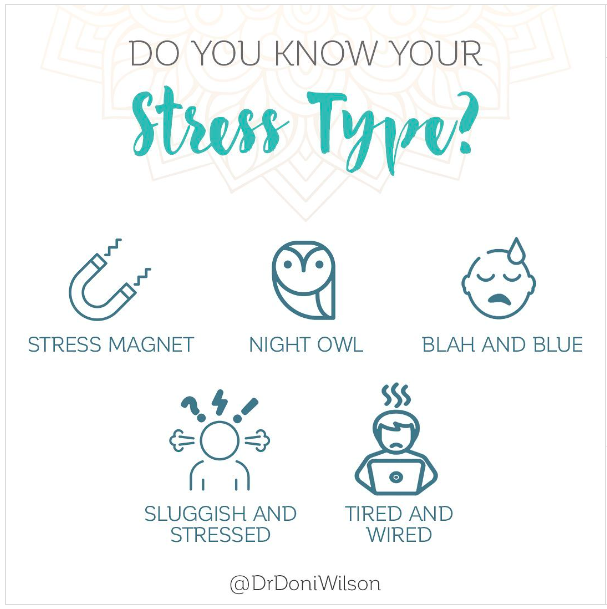
The 5 Burnout Types

Healing HPV Holistically: Dr. Doni on the Inspire Health by Jen Podcast

Recent Podcasts
Signup to receive our weekly newsletter with all the latest news, podcasts and special offers
New Book - Order Today!
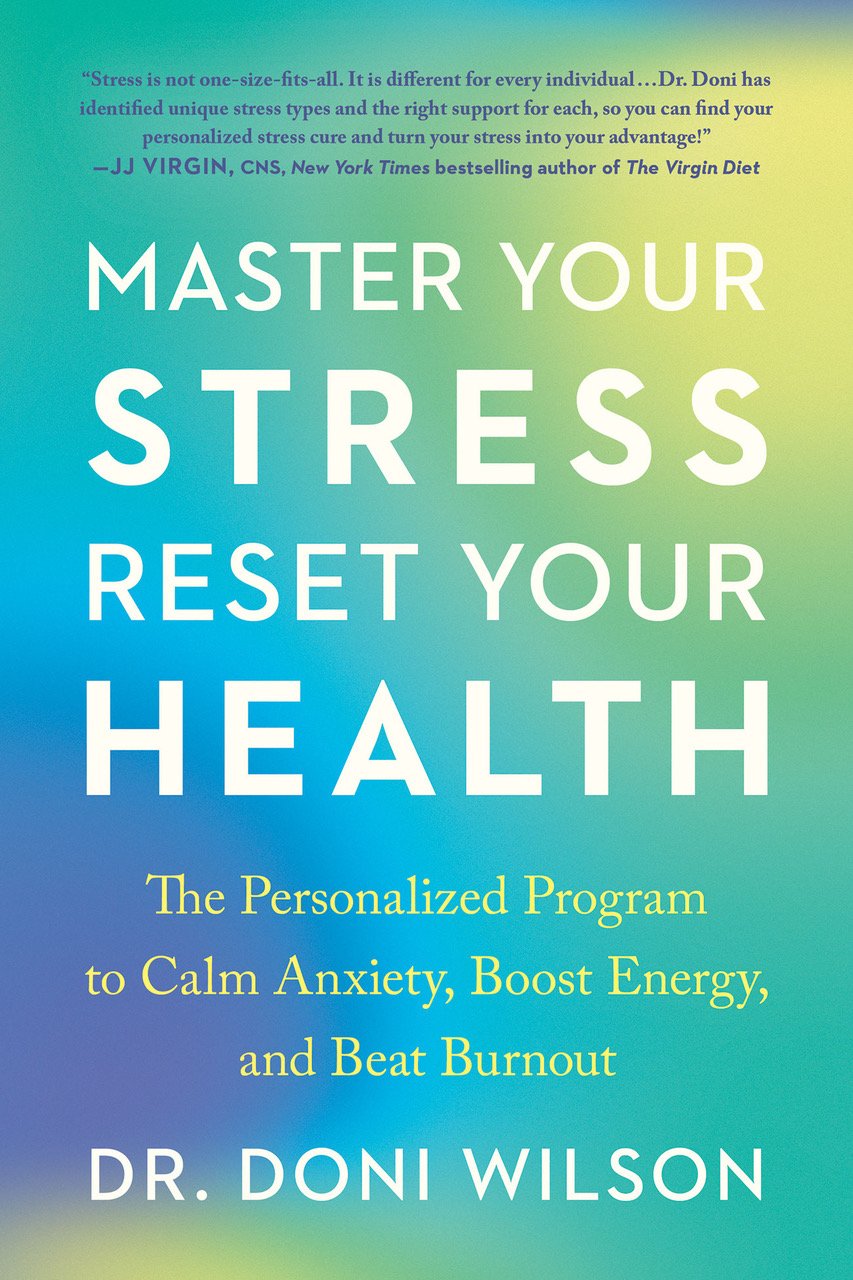
SIMPLE PRACTICES for SHIFTING FROM YOUR STATE of STRESS to YOUR FLOW and FREEDOM
MASTER YOUR STRESS
RESET YOUR HEALTH
Order Now! Related Posts

What is making you susceptible to HPV?
I have been working with women who had abnormal cells on their cervix and/or vaginally, caused by HPV for over 20 years now. And while

The 5 Burnout Types
Did you know there are 5 burnout types? They are based on your Stress Type®, which is how your adrenal function has been affected by
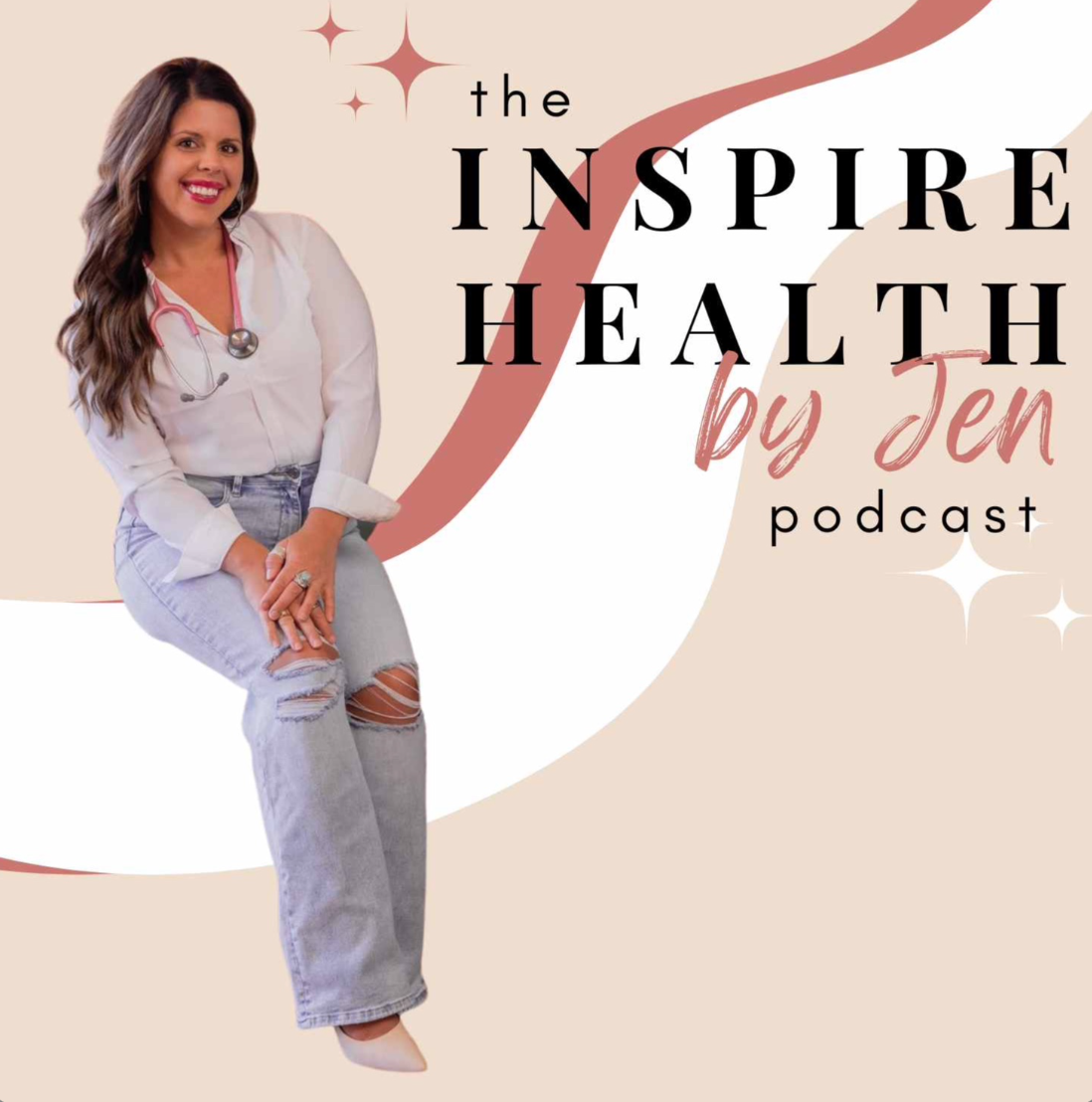
Healing HPV Holistically: Dr. Doni on the Inspire Health by Jen Podcast
Dr. Doni was interviewed by Jen Ciszewski on the Inspire Health by Jen Podcast, talking about how to heal away HPV from your body for good.

Stress and Trauma: The Science Behind It, How It Shows Up and How to Heal: Dr. Doni on The Burn Fat and FEAST Podcast
Dr. Doni was interviewed by Sarah B. Thomas on the Burn Fat and FEAST Podcast, talking about the impact of stress and trauma on our health and what to do to recover from them.


